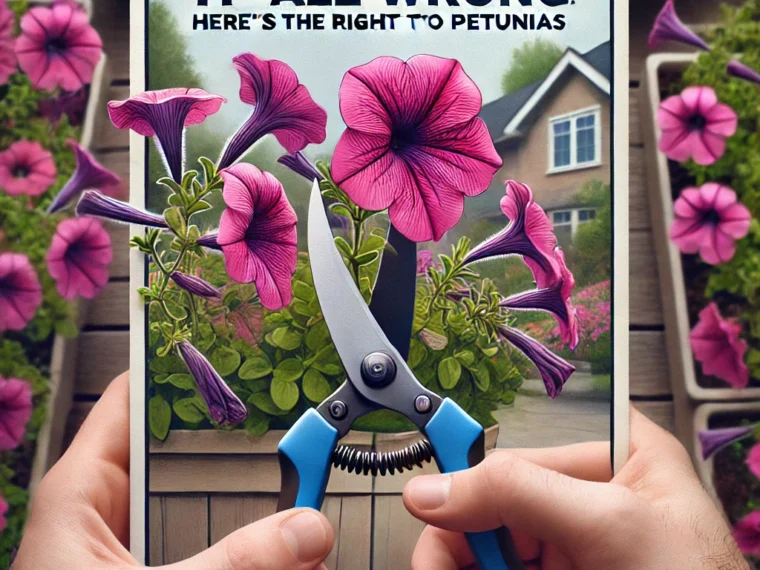2. Pinching Back for Fuller Growth
Pinching back involves removing the tips of the stems, which encourages the plant to grow more side branches. This results in a bushier, fuller plant with more blooms.
- When to Pinch: Start pinching back your petunias when they’re about 6 inches tall. Continue to pinch throughout the season as needed.
- How to Pinch: Use your fingers to pinch off the top inch or so of each stem, just above a set of leaves.
3. Cutting Back Mid-Season
Around mid-season, petunias can start to look leggy, with flowers concentrated at the ends of long, bare stems. This is a sign that it’s time to give them a more substantial pruning.
- When to Cut Back: Typically, this is done in mid-summer when the plant begins to lose its shape.
- How to Cut Back: Use sharp, clean scissors or pruning shears to cut back each stem by about one-third to one-half. Focus on cutting just above a leaf node, which will encourage new growth from that point.
4. Pruning for Shape and Size Control
If your petunias start to outgrow their space or become unruly, don’t hesitate to trim them back to control their size and shape. This can be done as needed throughout the season.
- How to Prune for Shape: Follow the natural shape of the plant, cutting back stems that are too long or out of place. Always cut just above a set of leaves.
5. Monitoring for Disease and Pests
As you prune, take the opportunity to inspect your petunias for signs of disease or pests. Remove any damaged or diseased leaves and stems to prevent the spread of problems.
- Common Issues: Look out for aphids, spider mites, and powdery mildew. Removing affected parts early can save the rest of the plant.
Aftercare for Pruned Petunias
After pruning, give your petunias a little extra care to help them bounce back:
- Watering: Water your petunias deeply after pruning to help them recover.
- Fertilizing: Feed your plants with a balanced, water-soluble fertilizer to encourage new growth and more blooms.
- Mulching: Add a layer of mulch around the base of the plants to retain moisture and suppress weeds.
Conclusion
Pruning petunias the right way can make a world of difference in the health and appearance of your plants. By deadheading regularly, pinching back, cutting back mid-season, and monitoring for pests and diseases, you’ll enjoy a garden full of lush, colorful petunias all season long. Remember, a little effort in pruning goes a long way in ensuring your petunias remain vibrant and beautiful. Happy gardening!
